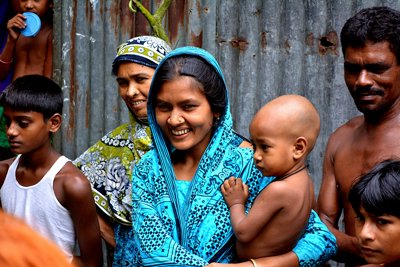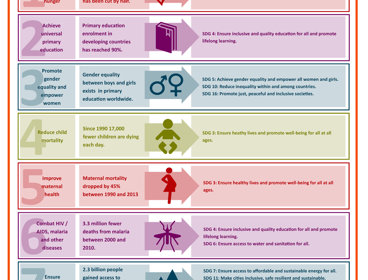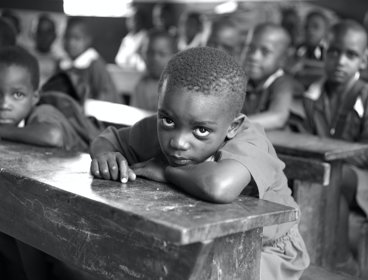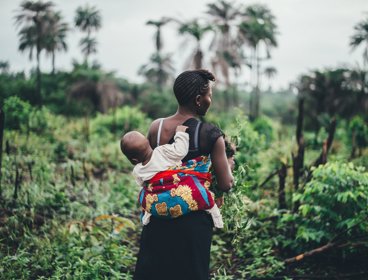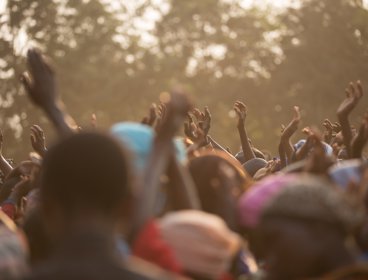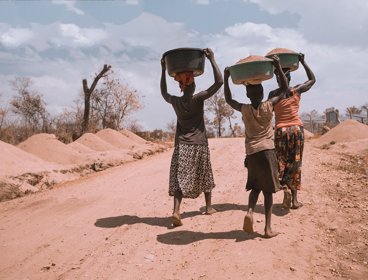Katie Willis is Professor and Head of the Department of Geography at Royal Holloway, University of London. Her work focuses on gender, migration and development. We interviewed Professor Willis on the shifts and changes represented by the continuation of the eight Millennium Development goals through to the new 17 Sustainable Development goals.
In which of the Millennium Development Goals (MDGs) do you believe there has been most progress?
Over the MDG period (2000-2015) there was progress in all eight goals, but the extent of that progress depends on the scale of analysis. Poverty reduction was the key focus of the MDGs, so it was important that MDG1 targets on poverty and hunger were met. From 1990 to 2015 the percentage of people living in extreme poverty (less than US$1.25 per day) was more than halved (this was the target), but there were substantial differences between regions in the Global South. Considerable progress was made in access to primary education, but limited access to primary education remains in some regions.
There were notable improvements in health indicators, with significant reductions in child mortality, maternal mortality and HIV, malaria and tuberculosis infections. However, rates of child and maternal mortality remain unacceptably high and millions of people are still diagnosed with tuberculosis, malaria or HIV every year.
Was the timescale for the MDGs a reasonable one?
In setting the MDG timescale, the UN needed to provide sufficient time to set up the programmes and policies to address the targets, but also to have a sense of urgency and momentum. In fact, while the target dates for the MDGs were 2015, the baseline figures were for 1990. This means that the extreme poverty reduction target, for example, was to reduce extreme poverty by half between 1990 and 2015. Given the progress that had been made on poverty reduction between 1990 and 2000, this timeframe meant it was more likely that the 2015 target would be achieved.
Are there processes that needed greater attention in the MDGs?
There are two processes: firstly, growing inequality in both social and spatial terms was not really considered. Having national targets meant that there was limited consideration of how there might be winners and losers. There was a focus on those groups and locations which were easier to access. Addressing inequality is important for inclusive development, but there is also evidence that significant levels of inequality can be detrimental to national economic and social development. The United National Development Programme (UNDP) recognises this in its annual calculation of the Inequality-Adjusted Human Development Index.
The other element which was excluded from the entire MDG process was acknowledgement of how definitions of development might vary spatially and socially. The whole process was very top-down, with no inclusion of voices from poor and marginalised communities.
How has progress towards MDGs varied between parts of the world?
There have been substantial differences between global regions in MDG progress. For example, global poverty reduction targets were reached, but that important achievement masked spatial differences. China’s extreme poverty levels tumbled from 61% of the population in 1990 to only 4% in 2015. Because of the size of China’s population, this fall made a significant contribution to the world figures (see table).
In contrast, poverty levels in Sub-Saharan Africa fell, but were not halved over the MDG period (see graph). It is important to note, however, that according to United Nations figures; in 2011 approximately 1 billion people in the world lived in extreme poverty (less than US$1.25 per day). Of these, nearly 60% lived in five countries: India, Nigeria, China, Bangladesh and the Democratic Republic of Congo (DRC). Whilst overall we have seen the rate of poverty fall, we have also seen extreme poverty become proportionally more concentrated in certain parts of the world.
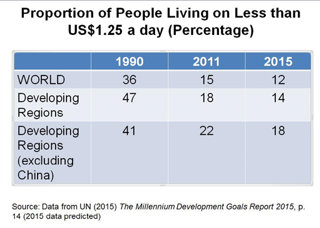
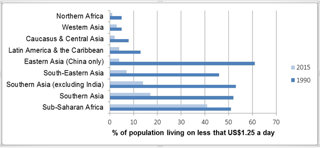
In relation to other MDGs, Sub-Saharan African countries have made significant progress, but as a region, Sub-Saharan Africa has some indicators that remain worse than for other global regions. For example, access to primary education in Sub-Saharan Africa increased from 52% to 80% between 1990 and 2015. However, for ‘Developing Regions’ as a whole the improvement was from 80% to 91% (Figures from UN Millennium Development Report, 2015). In other indicators, such as women’s labour force participation, Sub-Saharan Africa does much better, with lower figures for Northern Africa, Southern Asia and Western Asia.
In the past there has been some criticism that data has been misrepresented to make positive changes seem more effective than they have been. To what extent do you think real changes have been felt by people living in poverty?
One of the criticisms that can be made about the quantitative targets which were set as part of the MDGs was that there was little consideration of underlying processes. For example, the goal to provide all children with access to universal primary education was a very important one, and international donors were particularly crucial in providing aid to governments to make primary education free. This had a very positive impact on primary school enrolment. For example, in Kenya, primary school enrolment increased from 67.8% of eligible children in 2000 to 95.9% in 2013 according to Government of Kenya figures. Enrolment does not, however, indicate attendance and it also does not include information about the nature of the education. From my own observations in Central Pokot, North West Kenya, while children’s primary school enrolment increased once fees were abolished, the poor quality of the facilities and a lack of teachers, meant that the level of education was sometimes sub-standard. Children’s other responsibilities, such as domestic work for girls or herding cattle for boys, sometimes affected school attendance, and lack of food meant students were sometimes too hungry to concentrate effectively on their schoolwork.
Which MDG saw the least progress and why do you think that was?
MDG 7 was ‘Ensure Environmental Sustainability’ and included targets on reducing deforestation and biodiversity loss, controlling greenhouse gas emissions, and increasing access to clean water and sanitation services. This goal saw the least progress, with most of the targets not being met. Globally, drinking water targets were achieved, but there was significant failure in many of the others. This failure is for two main reasons. Firstly, environmental sustainability involves greater complexity than some of the other targets. For example, reducing child mortality can be greatly assisted through the provision of vaccination services and insecticide-treated bed nets to protect children from mosquito bites and therefore malaria. While there may be resource challenges and interventions need to be suitable for local contexts, this form of development activity is generally easier to organise than reducing greenhouse gas emissions and deforestation. The second reason is around competing demands for development and different scales. As we know from international climate change conferences, such as the Paris Climate Summit in 2015, there are tensions between the desire for economic development and the need to protect the environment.
What are the Sustainable Development Goals (SDGs) and how do they fundamentally differ from the MDGs?
The SDGs were agreed by the United Nations in September 2015 and came into force in January 2016. They lay out the goals that will shape international development activity until 2030. There are 17 SDGs and they were devised through a consultation process with populations throughout the world through face-to-face workshops and an online survey.
A substantial difference from the MDGs is the greater engagement with environmental aspects. Rather than having one goal to cover environmental sustainability, there is now a range of goals including SDG 14 and 15 on terrestrial ecosystem protection, SDG 12 on sustainable consumption and production, and SDGs 6 and 7 on sustainable water and energy provision. There is a much clearer recognition of the need to bring together environment, economic and social dimensions to achieve sustainable development.
A second fundamental difference, and one which really excites me as a development geographer, is the expansion of the SDGs to encompass all countries of the world, rather than just the countries of the Global South. For example, SDG 1 still focuses on poverty, but this includes national definitions of poverty, rather than just the extreme poverty of less than $1.25 per day.
What do you predict to be the most important potential barrier to the success of the proposed SDGs?
While the SDGs have been welcomed as being more inclusive and wide-ranging than the MDGs, this expansion of remit makes their achievement even more complicated. There are 17 SDGs and 169 targets. However, as a framework for international co-operation they provide a useful starting point and they will underpin international aid policy until 2030. The most important potential barrier to the success of the SDGs will be inequalities of economic and political power at different scales. The SDGs appear to be a neutral list of desirable goals, but how they are interpreted and what measures are introduced to achieve them will vary greatly depending on government, international agency, non-governmental organisation and community priorities. Some of the goals, most notably those relating to the environment, require significant shifts in the way in which people, particularly in the Global North, live their lives and the aspirations of millions of others for a ‘good life’.
Key Words
Terrestrial ecosystem
An ecosystem found only on landforms. Six primary terrestrial ecosystems exist: tundra, taiga, temperate deciduous forest, tropical rain forest, grassland and desert.
Sustainable Development
Development that meets the needs of the present, without compromising the ability of future generations to meet their own needs.
Lesson Ideas
Professor Katie Willis mentions how the millennium development goals have affected particular countries in her interview; as a class research one of these countries and report back how this country has performed. Think about why this country may have performed well, or poorly, and what can be done in the future to help sustainable development there.
Depending on class size, students work individually, or in pairs to research one of the 17 SDGs and prepare either a short presentation, or leaflet on that goal to be shared with class in group discussion and distribution.
Celebrities (pop stars, actresses and actors, footballers, bloggers) have been heavily involved in the promotion of the new sustainable development goals (you can view some of the videos via the Global Goals YouTube channel. In class discussion debate the use of celebrities and social media to promote the goals. Is this an effective way to raise awareness? How might social media campaigns affect global and geographical changes?
Links
Katie was interviewed in April 2016.
